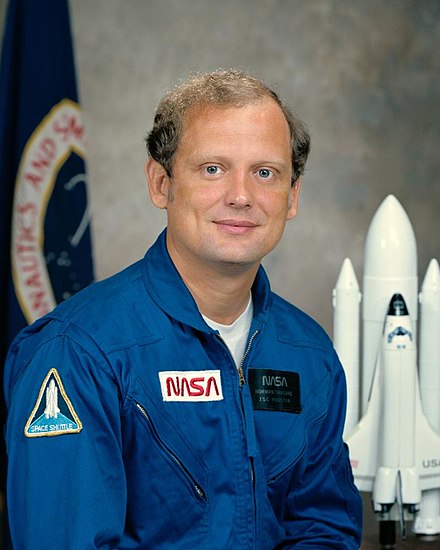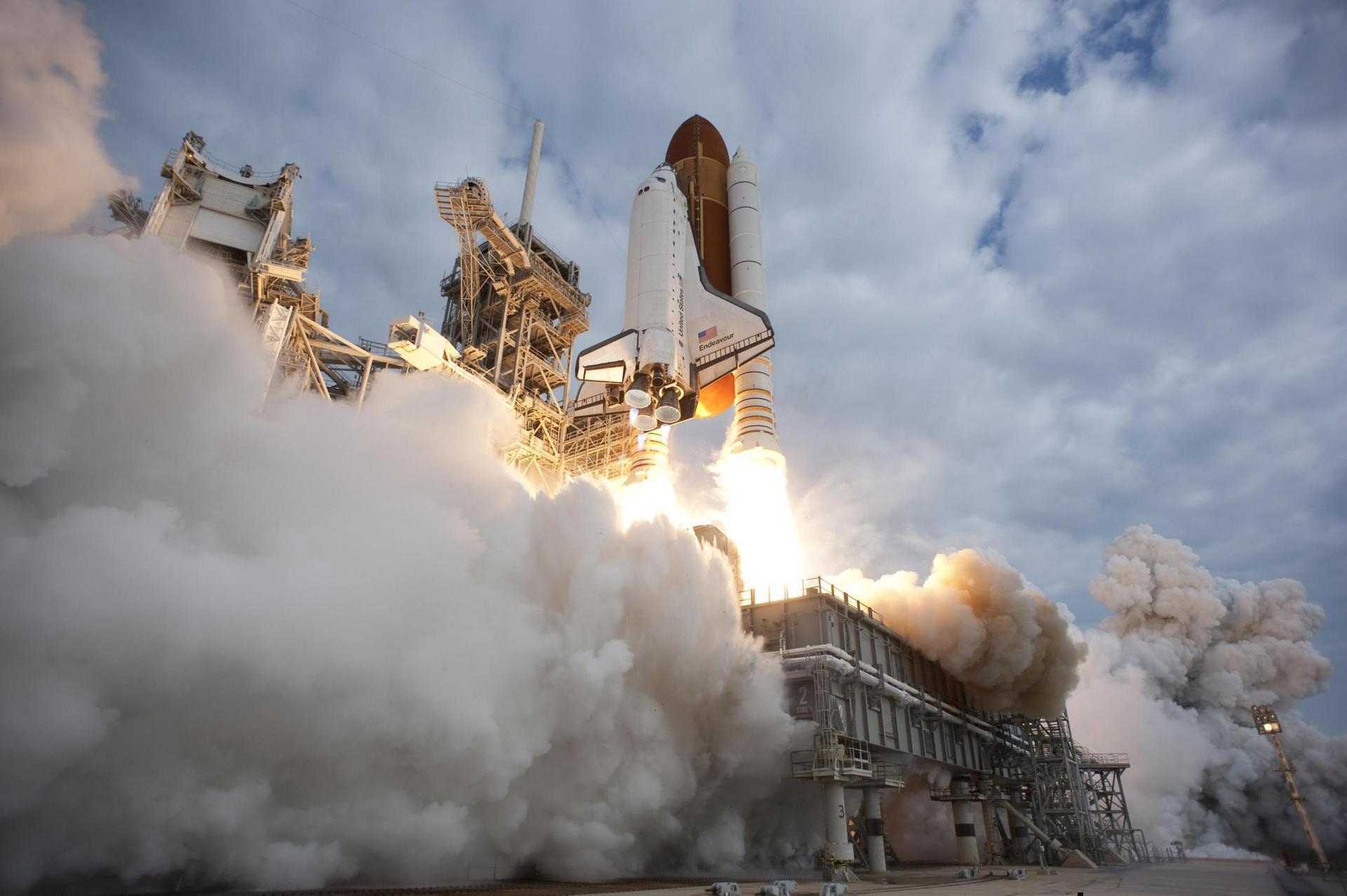Norman E. Thagard
American - (NASA)
Retired
Date of Birth: July 3, 1943
Age: 82
Norman Earl Thagard (born July 3, 1943), (Capt, USMC, Ret.), is an American scientist and former U.S. Marine Corps officer and naval aviator and NASA astronaut. He is the first American to ride to space on board a Russian vehicle, and can be considered the first American cosmonaut. He did on this on March 14, 1995, in the Soyuz TM-21 spacecraft for the Russian Mir-18 mission.
Space Shuttle Challenger / OV-099 | STS-7
National Aeronautics and Space Administration | United States of AmericaKennedy Space Center, FL, USA
June 18, 1983, 11:33 a.m.
Status: Success
Mission:
STS-7 was the second mission for the Space Shuttle Challenger. It deployed several satellites into orbit. It was the first mission scheduled to land at Kennedy Space Center however it had to divert to Edwards Air Force Base due to bad weather. STS-7 carried Sally Ride, America's first female astronaut.
Low Earth OrbitSpace Shuttle Challenger / OV-099 | STS-51-B
National Aeronautics and Space Administration | United States of AmericaKennedy Space Center, FL, USA
April 29, 1985, 4:02 p.m.
Space Shuttle Atlantis / OV-104 | STS-30
National Aeronautics and Space Administration | United States of AmericaKennedy Space Center, FL, USA
May 4, 1989, 6:46 p.m.
Space Shuttle Discovery / OV-103 | STS-42
National Aeronautics and Space Administration | United States of AmericaKennedy Space Center, FL, USA
Jan. 22, 1992, 2:52 p.m.
Soyuz-U2 | Soyuz TM-21
Soviet Space Program | RussiaBaikonur Cosmodrome, Republic of Kazakhstan
March 14, 1995, 6:11 a.m.
Status: Success
Mission:
Soyuz TM-21 was the 21st mission and the 18th long-duration expedition to Mir space station. It was also a part of the US/Russian Shuttle-Mir Program. The mission began on March 14, 1995, 06:11:34 UTC, launching Commander Vladimir Dezhurov, Flight Engineer Gennady Strekalov and Research Cosmonaut Norman Thagard (who became the first American to ride the Soyuz) into orbit. They docked with Mir two days later. During their stay there, cosmonauts performed several EVAs to prepare for the docking of the new Spektr module. Station crew was visited by several Progress resupply spacecrafts, and welcomed aboard the STS-71 with the 19th expedition crew. Crews exchanged vehicles, and members of the 18th expedition returned aboard STS-71, landing safely back on Earth on 7 July 1995, 14:55:28 UTC. Soyuz TM-21 brought back the 19th expedition later on September 11, 1995, 06:52:40 UTC.
Low Earth OrbitSpace Shuttle Atlantis / OV-104 | STS-71
National Aeronautics and Space Administration | United States of AmericaKennedy Space Center, FL, USA
June 27, 1995, 7:32 p.m.
Status: Success
Mission:
STS-71 was the third mission of the US/Russian Shuttle-Mir Program and the first Space Shuttle docking to Russian space station Mir. It started on 27 June 1995 with the launch of Space Shuttle Atlantis from launch pad 39A at the Kennedy Space Center in Florida. The shuttle delivered a relief crew of two cosmonauts Anatoly Solovyev and Nikolai Budarin to the station and recovered Increment astronaut Norman Thagard. Atlantis returned to Earth on 7 July with a crew of eight. It was the first of seven straight missions to Mir flown by Atlantis.
Low Earth OrbitThe National Aeronautics and Space Administration is an independent agency of the executive branch of the United States federal government responsible for the civilian space program, as well as aeronautics and aerospace research. NASA have many launch facilities but most are inactive. The most commonly used pad will be LC-39B at Kennedy Space Center in Florida.
Long March 3B/E
Shijian 32
Launch Complex 2 (LC-2) - Xichang Satellite Launch Center, People's Republic of ChinaChinese experimental spacecraft of unknown purposes.
Ceres-1S
Tianqi 37-40
Rizhao offshore launch location - Haiyang Oriental Spaceport4 small satellites for LEO Internet of Things (IoT) communication purposes.
Long March 2C
AlSat 3A
Launch Area 94 (SLS-2 / 603) - Jiuquan Satellite Launch Center, People's Republic of ChinaEarth observation satellite built by China's CAST for the Algerian Space Agency.
Falcon 9
Starlink Group 6-98
Space Launch Complex 40 - Cape Canaveral SFS, FL, USAA batch of 29 satellites for the Starlink mega-constellation - SpaceX's project for space-based Internet communication system.
Long March 8A
SatNet LEO Group 18
Commercial LC-1 - Wenchang Space Launch Site, People's Republic of ChinaA batch of 9 Low Earth Orbit communication satellites for the Chinese state owned SatNet constellation operated by the China Satellite Network Group.…




